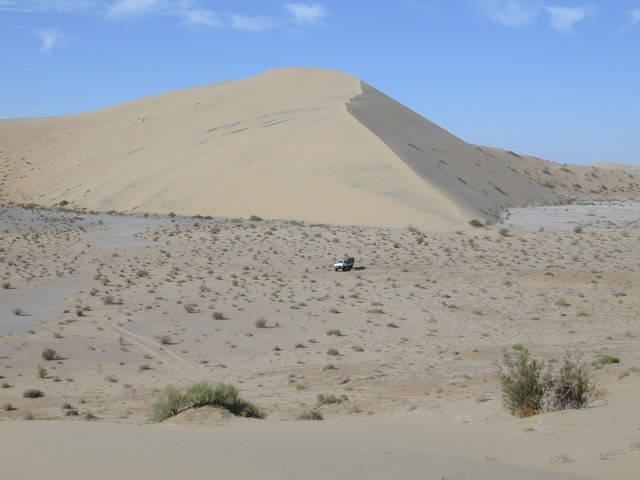

Later in the day, we switched quad riders, allowing Kathleen to drive
the mog and Kelly to do the quad.
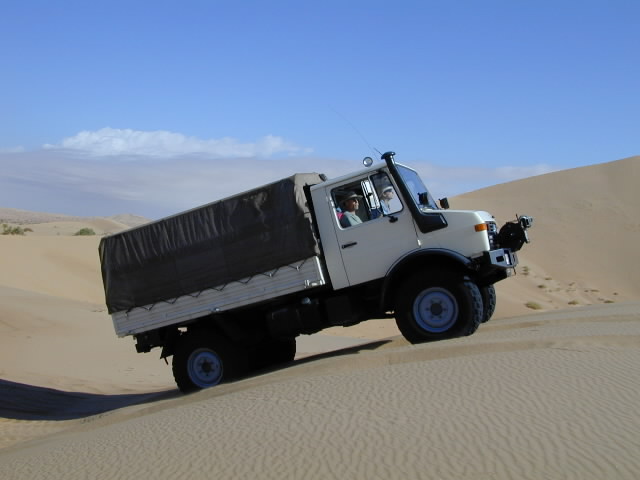
As we got further east, the dunes got bigger. And, sadly, the wind got stronger.
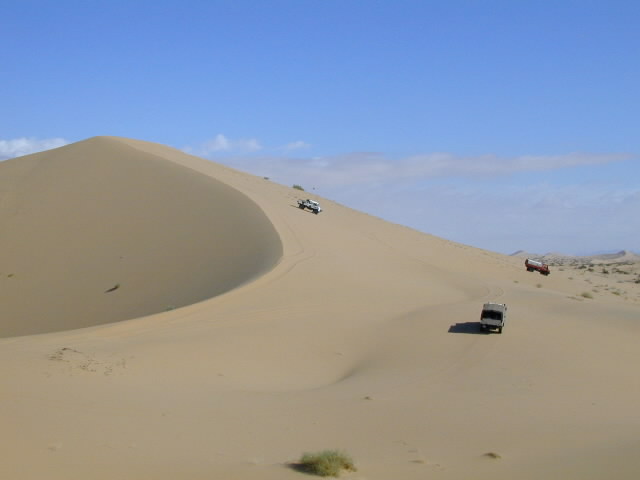
Extended low pressure operation, combined with bouncing de-beaded the
rear tire. With the application of some ether and a match, we were
reseated and on our way.

After many miles of navigation aided by the GPS, and seemingly in the middle of nowhere, we came upon this wooden cross. Given that it was asymetrical, it could be a road marker. Then only problem was that there was no road. Or any tracks. So, we concluded that it was a grave marker, left it alone and went on.
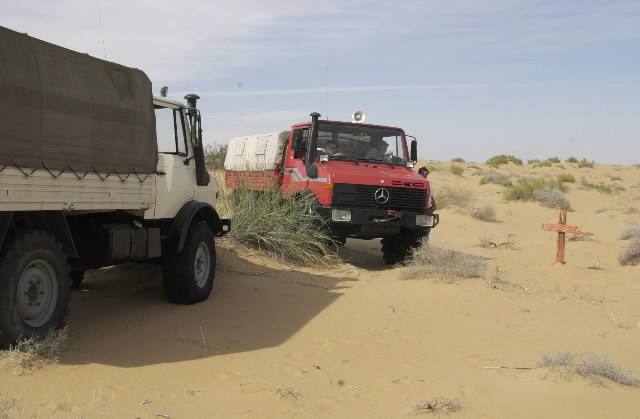
The deserts of North America are home to an amazing variety of wild life. The so-called Sonoran Desert is particularly rich in wildlife and insects. The Altar Desert, while in the state of Sonora, is in the ecozone referred to as the "lower Colorado desert". This area, near sea level in altitude, has much less wildlife due to the harshness of the climate. In fact, except for some sand lizards and one jack rabbit, the Altar Desert seemed devoid of life. On our way to Camp 3, we spotted a trantula near our path. These are big spiders, but they pose no hazard to humans unless you let them crawl on your boot.
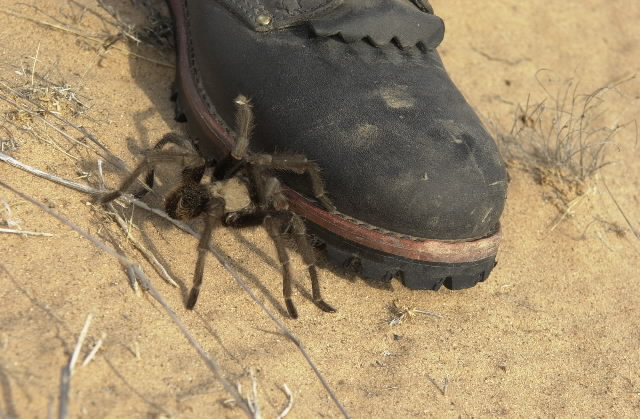
As the day wore on, we realized that El Gulfo was not reachable before dark. The tundra made the going too rough to make any good time. Going faster would risk damage to the vehicle, so we proceeded at a snails pace for several hours. We made the decision to find a camp and then finish the trip into El Gulfo the following morning. Based on GPS readings, our maps and a visual scan of the horizon, the only suitable area for camping was a blip on the horizon we determined to be "Estacion del Torres". Below, the 416 and the 1300 are leaving the tundra for Torres.
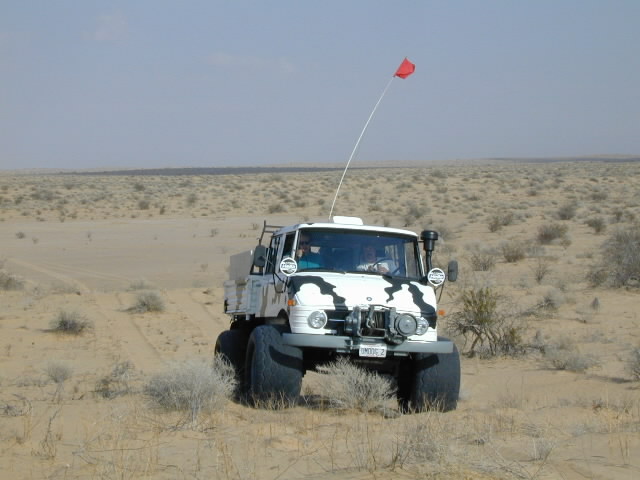
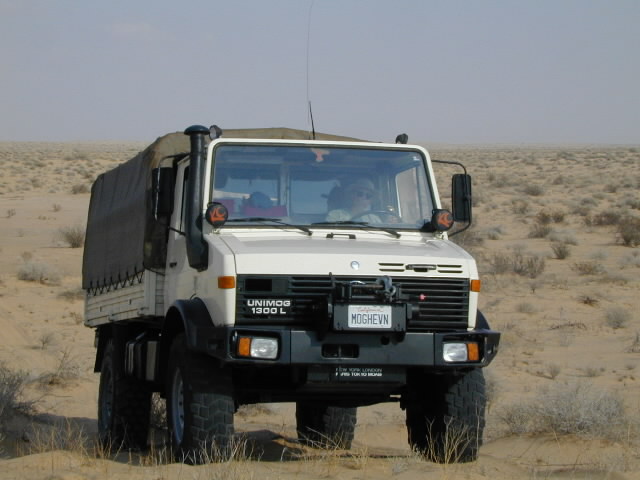
Torres was a case study in rural abandonment. The settlment was built to service the trans-Mexico railroad when they ran steam locomotives. As the railroad moved to diesel-electric, the need for frequent stops dissapeared. And so did the myriad of little villages that were there solely to support the trains. Torres was built of solid materials, but had been raped of anything of even partial value. All the windows of the houses were removed down to the casements. The doors and all the furniture were gone. All the plumbing fixtures, including the toilets were also gone.
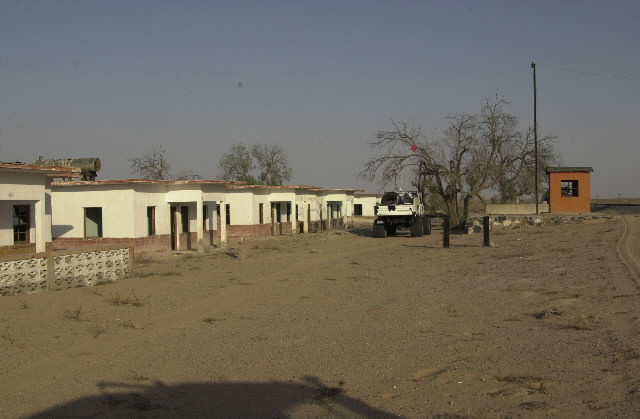
There were six houses built at Torres, all neatly alligned. Most were filled with broken glass, cans, trash or blow sand. Kai and Matt elected to set up house in the least bad of the group. Kathleen and I, however, opted for the elegance of the concrete slap atop the water cistern. While the ledge would be dangerous when drunk (a common occurance after dark), the risk was deemed acceptable and we set up shop. It was good to be sleeping above the blowing sand at night.

Like most places in the west, if the water goes, so do the people. We do not know why Torres was abandoned, but the presence of this drill suggests that the well was dry and that they gave up and left everything including the drill.
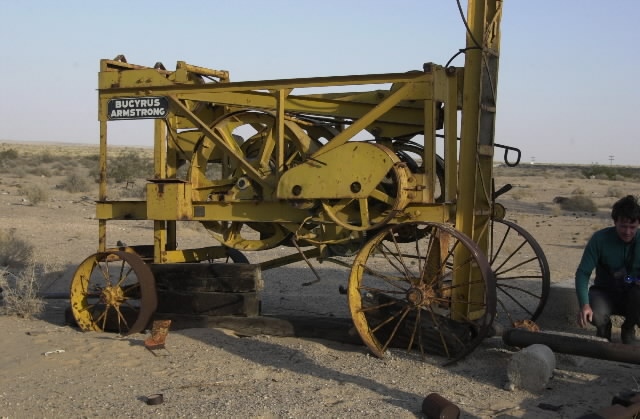
That evening we had turkey breast in the dutch oven and were treated to a reasonable sunset. The main line railroad tracks are visible in the lover part of the photo.

Later that night, after just a few cocktails, were were subjected to a huge freight train. Given that we were camping just a few feet from the tracks, the noise and vibration were tremendous. We saw the train coming for many minutes thus allowing us to position a multitude of coins and beer cans on the tracks to await the thunderous force. All objects were pretty much flattened into oblivion. As the night wore on, I became restless. Searching the area, I found a number of derelict tires and with the help of my charcoal starter, made a great bon fire that we all enjoyed. The heat from the buring rubber was intense, forcing us to back off a substantial distance. I was subjected to much ridicule from the other members of the group for my endevour, but my persistance paid off. The tires were reduced to smoking rubble by the end of the evening.